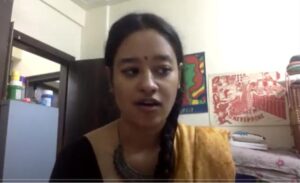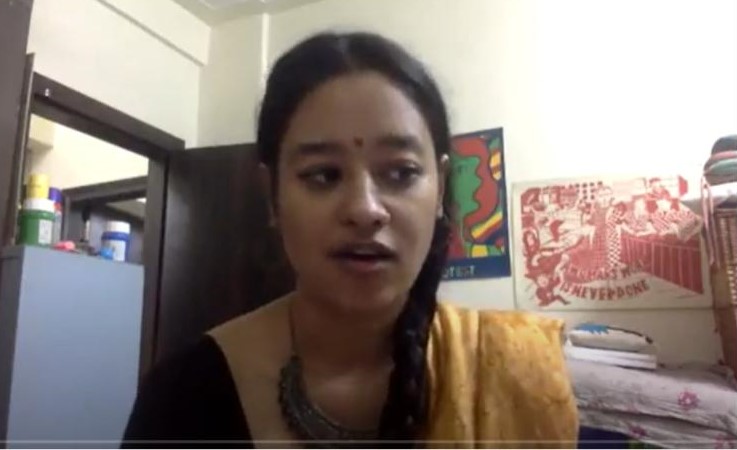Aqui Thami
The fifth volume of Prabuddha: Journal of Social Equality has been published and it carries articles by women authors from anti-caste thought and indigenous radical movements in the USA. SAVARI is happy to share an excerpt from: Indigeneity is the Absence of India, Prabuddha: Journal Of Social Equality, 5(1), 23-30
 Abstract: Through the metaphor of visiting Gorkhaland this paper raises questions on the impact of the formation of colonialism, borders, and nation-states on historically mobile communities. It provides an insight into how a region and its people imagine their history and future outside the existing nation-state while continuing to negotiate with the present marred in blood and state-led violence. The paper further informs about the politics that unfold around ethnicity, linguistic, regional and indigenous identities in the wake of the totalitarian state.
Abstract: Through the metaphor of visiting Gorkhaland this paper raises questions on the impact of the formation of colonialism, borders, and nation-states on historically mobile communities. It provides an insight into how a region and its people imagine their history and future outside the existing nation-state while continuing to negotiate with the present marred in blood and state-led violence. The paper further informs about the politics that unfold around ethnicity, linguistic, regional and indigenous identities in the wake of the totalitarian state.
[…] Once the British marked their territories and all these treaties were signed, some very interesting things happened. For the first time, there was a concept of citizenship among the Himalayan people that did not exist before this. Suddenly, there were questions being asked and people being recorded as citizens and non-citizens, as foreigners and migrants. These things were not done previously because a large part of indigenous communities were just mobile communities who would be walking across invisible borders that were drawn afterwards. The developmental strategies were enforced with the establishment of tea gardens and projects like cinchona plantation, hydroelectricity projects etc. For this they needed a lot of labour and that is how they started enlisting people as plantation slave laborers. That culture still continues. After the British left, the tea gardens came to be owned by the Bengali upper-caste people or corporates. The same group of people who worked in the tea gardens continued to work there. Even though we had different kinds of colonizers coming in, it was the British, who, for the first time changed the topography of this land and actually started using spaces that were considered holy or sacred spaces by indigenous communities. We also had a lot of conversions. This was actually the third set of conversions. Our ancestors were made to go through forceful conversions by the Chogyals and the Tibetan Buddhists. After that, there were the Hindu kings, and then the Christian missionaries that came from England and other places. In between somewhere, there were the Mughals, and that is why we have some populations of Muslims too.
When the British left, Darjeeling was a part of East Pakistan for three days. When we got independence from the British, we did not have the Indian flag up, we actually had the Pakistani flag up for three days, and after three days it was India’s flag. So it was dealt with without any seriousness. They did not really understand the economic viability of the space in the beginning, and later on, they looked at how important Darjeeling tea would be. Eventually, tourism would become very important for this part after the division of Bengal.
After the Indian independence is when our people and communities started facing brutal, militarized violence. There were a lot of killings in the tea gardens. In the 1950s, the first tea garden rebellion occurred at Margaret’s Hope tea garden where they killed five people including one minor and one pregnant woman. Since then, it has never stopped. It has only gotten worse. During the 1970s, people started asking for recognition of the language in the Indian constitution, and then again, the Indian military was sent in. But the most brutal of them was in the 1980s where, even according to the figures of the state government there were 1200 people killed in one year between 1986 to 1987 under the Gorkhaland agitation that was led by Subhash Ghising. They sent battalion after battalion of military and paramilitary forces. Men had to hide underground. What my mother and aunts tell me is that almost all the women were raped, but obviously, there is no after-care or trauma-redressal. This Happened under the communist regime of Bengal. We do not really hear about these things in the popular discourse. It was in 1988, some thirty years ago, that they signed an agreement with the Bengal government for the formation of the Darjeeling Gorkha Autonomous Hill Council. It sounds like a great name but there is no autonomy. It was created so that the agitations would stop. That went on for some time and some agreements were made with Subhash Ghising, who led the Gorkha National Liberation Front (GNLF) party. When it started it wasn’t really a political party; it was a people’s party for them to come together, articulate, form groups and resist. But obviously, when the government got involved, it quickly turned into a political party, and then they started participating in elections and other things, after the agreement was signed for DGHC. It went on for a couple of years. In between, there would be something that the Bengal government was not happy with, and suddenly they would blackout the entire region and bring in the army. As kids, we would hear choppers over our houses. We wouldn’t know what was going on. And then, after a few days, things would be normal. Schools would reopen and there would be no bandh. That went on for quite some time, and then, in 2007 there was a huge coming together of people, and it was again the same thing. [..]
Read the full article here: Thami, A. (2021). Indigeneity is the Absence of India. Prabuddha: Journal Of Social Equality, 5(1), 23-30.
